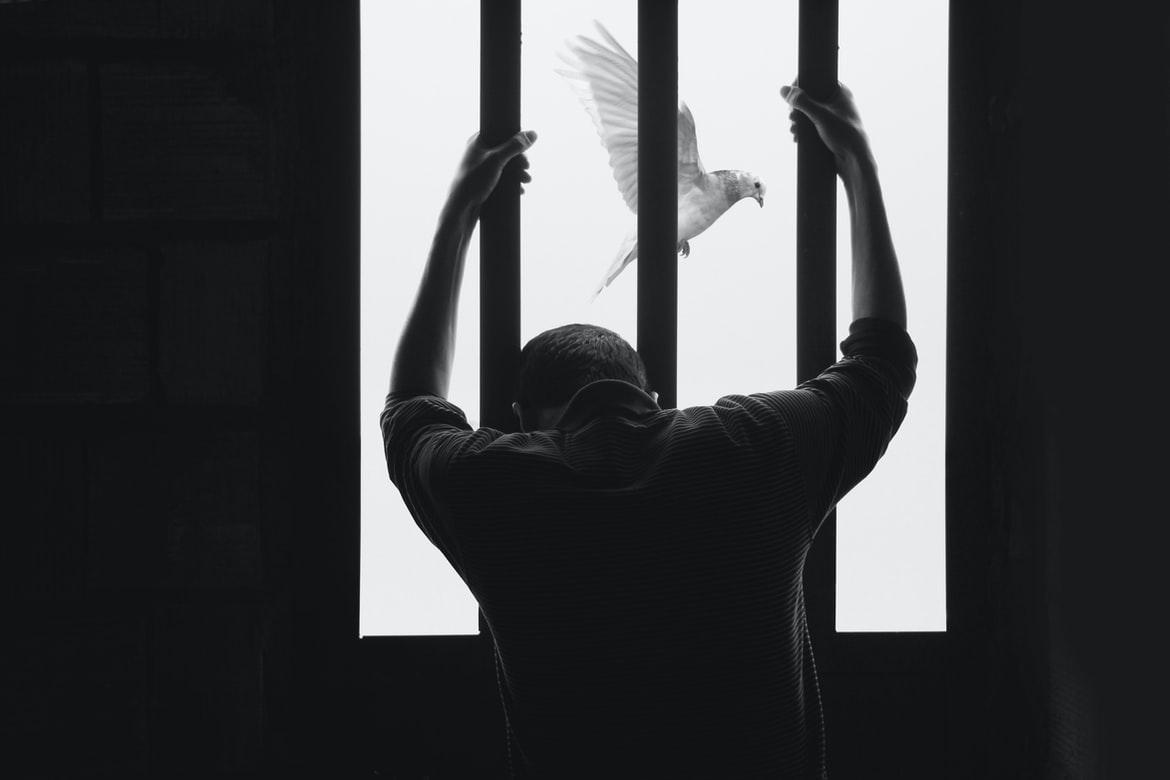
Getting back into prisons research: "Avant-Guard" with Helix Arts
By: Sarah Doxat-Pratt.
After many, many, months of planning and postponing, it was with great excitement that Helix Arts were finally able to carry out their Inspiring Futures project. A collaboration with Age UK North Tyneside and Teeside, and facilitated by actor and director Craig Conway, the project is called Avant-Guard. Craig worked with older men in a prison in the north-east to share stories of incarceration, lockdown, and life. Working with Craig alone or in small groups of two or three, the men used conversation and different art forms – painting, children’s stories, poetry, song… – to explore their pasts and express themselves. The material will now be developed into one or more creative works: perhaps an exhibition of art works; or perhaps a one-man performance, in which Craig will portray the voices and stories of those behind bars; or perhaps a radio show, that can be played publicly and across prison radio.
The start of this project marked the return to prison research for Inspiring Futures. Prisons have been closed to almost all researchers over the past year, as they have been to many visitors, educators and creatives. I was able to go in with Craig on his recruitment drive – we chatted with small groups of prisoners on different wings, still in their Covid-19 social bubbles, to introduce the creative project and the research and get people on board. I was then able to return at the end of the project, to gather in reflection questionnaires and to talk to the participants about what it had meant to them. This blog post shares some reflections on being able to see first-hand a snapshot of what the pandemic has meant for prisoners, and how the Helix Arts project had impacted them.
On the first visit, what stood out the moment I stepped arrived was how quiet it was. The sensory experience of prison and other criminal justice settings is becoming an important part of prisons research, and it was striking to pause and absorb the sounds of the prison. There was very little of the usual hustle and bustle of prison life; no shouting through the windows or banging of gates as routes around the prison get opened up, no noise from machinery in workshops or men talking to one another on the wings or in the exercise yards. The prison housed over 1,000 men; yet walking around, there were very few signs or sounds of life.
The main reason for this is of course the heightened restrictions due to Covid-19: at the beginning of the project, there was very little activity to bring people out of their cells or to allow people to interact. In July 2020, the Justice Committee published a report stating their concern over the potential health and wellbeing consequences of prisoners living in heightened restrictions. It stated: “The prison estate has been in a state of lockdown for 15 weeks, and it is concerning that prisoners have not yet begun to transition from that state.” Of course, even in July 2020 it was hardly predictable that things would last as long as they have. But over a year later, prisoners we spoke to still reported spending very little time out of their cells. Most educational programmes are in-cell only, they said, and many work options are still not available. As we walked around the prison, we hardly saw any prisoners outside: three prisoners walked in circles around a small yard (“that’s their daily exercise,” said our escort), and a few prisoners worked sorting through rubbish. Even on the residential units, there was very little of the hubbub of life. A briefing from the Prison Reform Trust points out that however well-intentioned in terms of protecting people from Covid-19, quarantine regimes have amounted to thousands of people being held in prolonged solitary confinement, with all kinds of negative impacts for relationships, rehabilitation, and mental health and wellbeing. By the return visit at the end of the project restrictions had been lifted further, but it was still a long way from normal.
For the Helix Arts project, the impact of the pandemic took on a particular form because the project was run in collaboration with Age UK North Tyneside, who work in the prison with men over 50, many of whom are on the Vulnerable Prisoners Unit (VPU). A particular point of advocacy for Age UK is healthcare for the elderly in prison, such as providing advice for dementia-friendly cells. On my follow-up visit, one member of staff was delighted that they had received permission to enact some of these recommendations, and other men on the unit were beginning to re-paint a cell. But it is clear that for those older prisoners already struggling with cognitive function, the ongoing disruption to activity and interaction with others has had a detrimental effect on their health.
In the midst of all this – coming out of more than a year of extended lockdowns, minimal interaction and, for many, worsening mental health – the Avant-Guard project offered a spark of interest, even a ray of hope, to many. Those we spoke to at the beginning were excited about the potential of doing something creative, working with other people, and having the opportunity to share their stories with the outside world. Many brought their artwork with them to show us, such as paintings or books of poetry (see this gallery for examples of prisoner artwork, curated by Koestler Arts; we saw pieces of similar quality). Everyone we met with had some kind of creative interest – even those who initially said they didn’t eventually revealed that they wrote stories for grandchildren, or dabbled in song lyrics. Craig gave them tasks each week, things to think about and turn into writing or drawings.
There is a lot of data to process and analyse from the Helix Arts project, but the initial findings suggest that by enabling participants to engage creatively during workshops and to have a focus for the times in-between, the Avant-Guard project seems to have been beneficial for participants in numerous ways. On going round at the end of the project and hearing their thoughts on how the project had been, I heard many express positive surprise at how effective their times with Craig and the work in-between had been at helping them reflect on their choices and thought-patterns. Part of the idea of the project was to identify participants’ creative pursuits and use them to give prisoners a voice into the outside world, and some participants were certainly excited that their stories would be contributing to a bigger piece of artwork. Participants also valued the cathartic experience of being able to express themselves in that way and the mental stimulation of being challenged. Perhaps most profoundly, though, the project seemed to have helped them understand themselves better. These are initial findings, but show a snapshot of the different ways creative activities have been beneficial for those in prison who have been able to do them.


